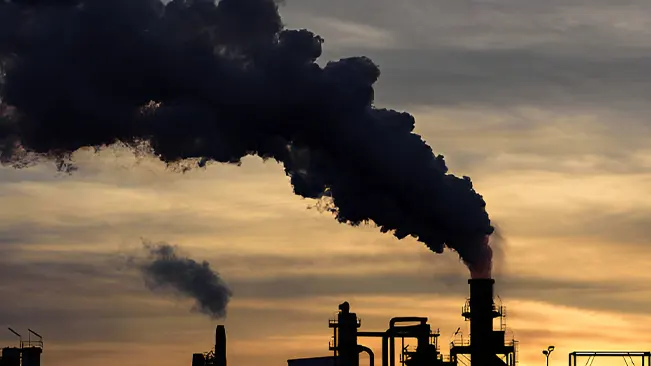Secrets of Carbon Footprint: What You Need to Know
- July 30, 2024
- 0 comment
Grasping the importance of your carbon footprint is pivotal in our collective quest for sustainability. This guide unpacks the vital role your environmental impact plays, from daily habits to long-term global effects. Discover actionable strategies and insights that empower you to reduce your footprint, enhance your Eco-awareness, and contribute to a healthier planet. Join us as we explore the essentials of carbon footprints and why every step toward reduction counts.
What is Climate Change?
Climate change refers to the long-term alteration of temperature and typical weather patterns in a place. While climate has changed throughout Earth’s history, the rapid warming seen today is primarily driven by the increase in greenhouse gases in the atmosphere. Human activities, such as burning fossil fuels, deforestation, and industrial processes, release significant amounts of carbon dioxide and other greenhouse gases, which trap heat in the atmosphere. This process is known as the greenhouse effect and is necessary for life on Earth, but the unprecedented increase in these gases is causing the planet to heat up at an unsustainable rate.

The effects of climate change are profound and far-reaching, impacting almost every aspect of the natural world and human life. Rising global temperatures contribute to more frequent and severe weather events like hurricanes, heatwaves, and droughts. Additionally, they cause the melting of ice caps and glaciers, leading to rising sea levels that threaten coastal communities and ecosystems. Other consequences include altered habitats, which affect biodiversity and the survival of species, and impacts on agriculture that threaten food security and water supplies. Addressing climate change requires international cooperation and comprehensive strategies to reduce greenhouse gas emissions, transition to renewable energy sources, and adapt to unavoidable impacts.
What are the Main Causes of Climate Change?
The primary driver of climate change is the accumulation of greenhouse gases in the Earth’s atmosphere, primarily carbon dioxide, methane, and nitrous oxide. These gases are chiefly produced by human activities. The burning of fossil fuels such as coal, oil, and gas for energy and transportation contributes the most carbon dioxide, the predominant greenhouse gas. Industrial processes, including those in the manufacturing and chemical industries, also emit significant amounts of carbon dioxide and other greenhouse gases. Deforestation further exacerbates the situation by reducing the number of trees that can absorb CO2 from the atmosphere.

In addition to these, agriculture plays a crucial role in the production of methane and nitrous oxide, two other powerful greenhouse gases. Methane is generated in substantial amounts by livestock through enteric fermentation and is also released during the production and transport of coal, oil, and natural gas. Nitrous oxide emissions come from agricultural and industrial activities, as well as combustion of fossil fuels and solid waste. Moreover, climate feedback loops, such as the release of methane from thawing permafrost and decreased albedo effect from melting ice, accelerate warming and compound the impact of these primary emissions, making the mitigation of climate change increasingly urgent.
What is a Carbon Footprint?
A carbon footprint is the total amount of greenhouse gases, primarily carbon dioxide, that are emitted directly or indirectly by human activities, measured in equivalent tons of carbon dioxide (CO2e). It encompasses all the emissions produced from burning fossil fuels for electricity, heating, and transportation, as well as the production and consumption of goods, services, and food. A carbon footprint can be calculated for an individual, a family, an organization, or within larger systems like cities or countries. This measurement helps to quantify the impact of these activities on the environment, particularly in contributing to global warming and climate change.

Understanding and managing one’s carbon footprint is crucial for mitigating the effects of climate change. By identifying the major sources of emissions, individuals and organizations can implement targeted strategies to reduce their carbon output. This might include adopting renewable energy sources, increasing energy efficiency, changing travel habits, and altering consumption patterns. Governments and corporations also use carbon footprint calculations to develop policies and practices that aim to reduce greenhouse gas emissions and engage in carbon offsetting and trading schemes, further underscoring the importance of this metric in global efforts to address climate change.
Why Reducing Our Carbon Footprint is Crucial
Combating Climate Change and Safeguarding Our Environment
Carbon emissions are notoriously harmful to our planet. Lowering these emissions can help mitigate the effects of global warming by reducing the rise in global temperatures. This can contribute to stabilizing sea levels, slowing the melting of polar ice caps, and curbing ocean acidification a process exemplified by phenomena such as coral bleaching, where corals expel the algae living in their tissues. The oceans, which absorb about 30% of the atmospheric carbon dioxide, become more acidic as they take in more CO2, affecting marine life and ecosystems.

Moreover, increasing global temperatures lead to extreme weather patterns, affecting the natural habitats of countless species. The shrinking sea ice, intensified by a 30% reduction since 1979, disrupts the Earth’s ability to reflect solar radiation and maintain its climate, further endangering diverse marine species.
Enhancing Public Health

Reducing greenhouse gas emissions is vital for decreasing the intensity of weather extremes and improving air and water quality essential for sustaining life and promoting biodiversity. Poor air quality, exacerbated by carbon and other greenhouse gases, significantly impacts human health. It increases the prevalence of respiratory diseases like asthma and can lead to more severe conditions due to elevated UV exposure and extreme weather events. These conditions include cancers, strokes, and cardiovascular diseases. Furthermore, diminished natural food sources contribute to widespread nutritional deficiencies, affecting overall human development.
Boosting the Global Economy

Economically, lowering greenhouse gas emissions can generate substantial benefits. Innovations that contribute to environmental protection and climate change mitigation can be highly profitable. Additionally, reducing emissions can decrease the incidence of air pollution-related health issues, reducing the strain on healthcare systems. It’s estimated that the economic impact of air pollution, particularly from fine particulate matter, costs around $886 billion annually in the U.S. alone, due to healthcare expenses linked to diseases caused by poor air quality.
Preserving Biodiversity

Climate change poses one of the greatest threats to biodiversity. The rapid environmental changes outpace the ability of many species to adapt, leading to increased extinction risks. By reducing greenhouse gases, we can slow these changes, giving plants and animals a better chance to survive and thrive. Healthy ecosystems are crucial for maintaining clean air, water, and food supplies, underlining the importance of biodiversity for overall ecological health.
What types of Carbon Footprints are there?
Primary Carbon Footprint

This refers to the direct emissions of carbon dioxide (CO2) and other greenhouse gases that result from your own actions. These emissions are often associated with the direct consumption of fossil fuels. For instance, when you drive a gasoline-powered car, the engine burns fuel which directly emits CO2 into the atmosphere. Other examples include using natural gas for heating your home or using electricity generated from coal-fired power plants. Measuring and reducing your primary carbon footprint involves taking direct actions such as reducing your use of fossil fuels, improving energy efficiency in your home, and choosing sustainable transportation options.
Secondary Carbon Footprint

This footprint covers the indirect CO2 emissions from the entire lifecycle of products and services that you use. It includes emissions from manufacturing, transportation, and disposal of goods that you purchase, such as food, clothing, electronics, and more. For example, the production of a plastic bottle involves extracting oil, refining it, manufacturing the bottle, and transporting it to stores—all of which contribute to CO2 emissions before it even reaches you. Reducing your secondary carbon footprint can be achieved by consuming fewer products, recycling, choosing products made with sustainable or recycled materials, and supporting companies that take measurable steps to reduce their carbon emissions.
Corporate Footprint

A corporate carbon footprint represents the total greenhouse gas (GHG) emissions caused directly or indirectly by an organization or company. This footprint is meticulously compiled through an inventory that encompasses all operational aspects of the company, from on-site energy use to employee commuting, and even extends to the supply chain processes. This comprehensive approach allows businesses to pinpoint areas where energy efficiency can be optimized. Not only does this assessment help in reducing operational costs, but it also enhances the sustainability profile of the company, making it an integral part of corporate environmental responsibility.
How to Calculate a Carbon Footprint
For Individuals
- Data Collection: Begin by gathering data on your daily activities that contribute to carbon emissions. This includes energy usage in your home (electricity, gas, heating oil), transportation (miles driven in gasoline or diesel vehicles, flights taken), and secondary factors like food consumption, goods purchased, and waste produced.
- Use of Carbon Calculators: There are various online carbon footprint calculators available that can help simplify this process. These calculators will ask for inputs based on your data collection and convert these into a quantifiable carbon footprint by using specific conversion factors that reflect the average emissions per unit of consumption.
- Adjustments for Accuracy: Refine your inputs to enhance accuracy. For instance, if you know the exact source of your electricity (e.g., coal, natural gas, renewables), you can adjust the emission factors accordingly, as the carbon intensity varies by source.
For Organizations
- Scope Determination: Define the scope of emissions to include. Scope 1 covers direct emissions from owned or controlled sources. Scope 2 covers indirect emissions from the generation of purchased electricity, steam, heating, and cooling consumed by the reporting company. Scope 3 includes all other indirect emissions that occur in a company’s value chain.
- Data Collection: Collect detailed data across these scopes. This involves gathering utility bills, travel records, material purchases, and waste management records. For Scope 3, you might need data from suppliers and data on the downstream use of sold products.
- Emission Factors Application: Apply appropriate emission factors, which are coefficients that quantify the emissions or removals per unit of activity. These factors are usually provided by governmental or international environmental bodies and are regularly updated to reflect the most accurate measurements.
- Calculation and Analysis: Use the collected data and emission factors to calculate total GHG emissions. Organizations often use specialized software for this purpose to handle large datasets and complex calculations.
- Continuous Monitoring and Improvement: After calculating the carbon footprint, it is essential to identify key areas of high emissions and explore potential reductions. Continuous monitoring and periodic re-calculation of the carbon footprint are vital to track progress and make adjustments in strategies for reducing emissions.
Conclusion
In conclusion, the importance of understanding and managing our carbon footprint cannot be overstated. As the effects of climate change become increasingly apparent and impactful across the globe, individual and collective efforts to minimize carbon emissions are essential. Whether through adjusting daily habits, adopting greener technologies, or supporting policies that encourage sustainable practices, every action counts. Businesses and individuals alike have a pivotal role to play. By actively reducing our carbon footprints, we contribute to a healthier planet, foster sustainable economies, and ensure a livable environment for future generations. Understanding our carbon footprint is the first step towards making informed decisions that lead to meaningful environmental change.
FAQS
- What is a carbon footprint?
A carbon footprint measures the total greenhouse gas emissions caused directly and indirectly by an individual, organization, event, or product, expressed as carbon dioxide equivalent. - Why is it important to reduce our carbon footprint?
Reducing our carbon footprint is crucial for mitigating the impact of climate change, conserving natural resources, improving air quality, and ensuring a sustainable future for the planet and its inhabitants. - How can I calculate my personal carbon footprint?
You can calculate your personal carbon footprint using online calculators that consider factors like your home energy usage, transportation methods, diet, and consumption habits. - What are the main components of a carbon footprint?
The main components typically include energy consumption, transportation, food consumption, goods and services, and waste production. - What steps can an individual take to reduce their carbon footprint?
Individuals can reduce their carbon footprint by using energy-efficient appliances, reducing car travel, flying less, eating a plant-based diet, recycling, and supporting renewable energy sources. - How do businesses calculate their carbon footprint?
Businesses calculate their carbon footprint by assessing direct and indirect emissions across three scopes: direct emissions from owned or controlled sources (Scope 1), indirect emissions from the generation of purchased electricity (Scope 2), and all other indirect emissions that occur in the company’s value chain (Scope 3). - What are some strategies for businesses to reduce their carbon footprint?
Strategies include improving energy efficiency, switching to renewable energy, optimizing supply chains, reducing waste, and engaging in carbon offsetting initiatives. - Can reducing my carbon footprint also save me money?
Yes, reducing your carbon footprint can lead to significant cost savings, especially through lower energy bills, fewer travel costs, and reduced consumption of goods. - What is carbon offsetting, and how does it work?
Carbon offsetting involves compensating for your emissions by funding an equivalent amount of carbon savings elsewhere, typically through projects like reforestation, renewable energy, or energy efficiency. - How can governments help in reducing the carbon footprint of communities?
Governments can help by implementing policies that promote renewable energy, energy efficiency, sustainable transportation, and waste reduction. They can also provide incentives for businesses and individuals to adopt greener practices.

Joel Cunningham
Forestry AuthorI'm Joel Cunningham, an expert in pruning and weed management with over a decade of experience. My skills are rooted in formal training and extensive practice, focusing on advanced pruning techniques and efficient weed control. I'm known for my quality work, precision, and deep understanding of plant health and soil dynamics. My contributions extend to educational initiatives where I share sustainable practices and advice, establishing myself as a reliable and authoritative figure in the gardening community.













Leave your comment